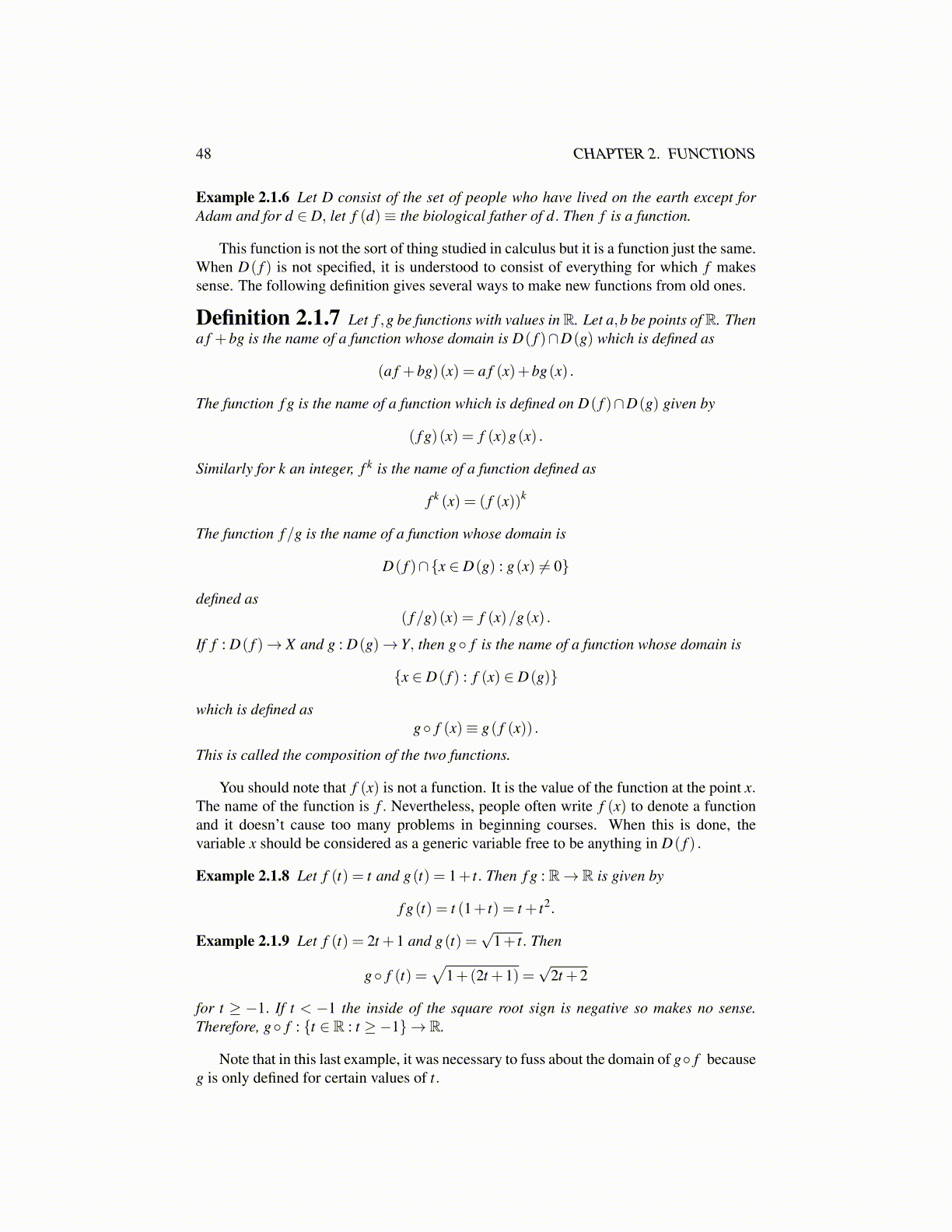
48 CHAPTER 2. FUNCTIONS
Example 2.1.6 Let D consist of the set of people who have lived on the earth except forAdam and for d ∈ D, let f (d)≡ the biological father of d. Then f is a function.
This function is not the sort of thing studied in calculus but it is a function just the same.When D( f ) is not specified, it is understood to consist of everything for which f makessense. The following definition gives several ways to make new functions from old ones.
Definition 2.1.7 Let f ,g be functions with values in R. Let a,b be points of R. Thena f +bg is the name of a function whose domain is D( f )∩D(g) which is defined as
(a f +bg)(x) = a f (x)+bg(x) .
The function f g is the name of a function which is defined on D( f )∩D(g) given by
( f g)(x) = f (x)g(x) .
Similarly for k an integer, f k is the name of a function defined as
f k (x) = ( f (x))k
The function f/g is the name of a function whose domain is
D( f )∩{x ∈ D(g) : g(x) ̸= 0}
defined as( f/g)(x) = f (x)/g(x) .
If f : D( f )→ X and g : D(g)→ Y, then g◦ f is the name of a function whose domain is
{x ∈ D( f ) : f (x) ∈ D(g)}
which is defined asg◦ f (x)≡ g( f (x)) .
This is called the composition of the two functions.
You should note that f (x) is not a function. It is the value of the function at the point x.The name of the function is f . Nevertheless, people often write f (x) to denote a functionand it doesn’t cause too many problems in beginning courses. When this is done, thevariable x should be considered as a generic variable free to be anything in D( f ) .
Example 2.1.8 Let f (t) = t and g(t) = 1+ t. Then f g : R→ R is given by
f g(t) = t (1+ t) = t + t2.
Example 2.1.9 Let f (t) = 2t +1 and g(t) =√
1+ t. Then
g◦ f (t) =√
1+(2t +1) =√
2t +2
for t ≥ −1. If t < −1 the inside of the square root sign is negative so makes no sense.Therefore, g◦ f : {t ∈ R : t ≥−1}→ R.
Note that in this last example, it was necessary to fuss about the domain of g◦ f becauseg is only defined for certain values of t.